Abstract
1. After ischaemic ankle dorsiflexor muscles had been fatigued by repetitive stimulation of the peroneal nerve at 15 Hz, there was a reduction in voluntary EMG activity which persisted as long as the arterial cuff remained inflated. 2. The reduction in voluntary EMG activity could not have been due to loss of excitability at the neuromuscular junctions or muscle fibre membranes since the M-waves (muscle compound action potentials) evoked by peroneal nerve stimulation were well maintained. 3. The preceding observations were consistent with the view that the reduction in EMG activity was due to reflex inhibition of motoneurones by afferents from the fatigued muscle. 4. The absence of responses to stimuli interpolated among the voluntary activity indicated that any motor units which could not be recruited in the fatigued muscle were no longer capable of generating tension.
Full text
PDF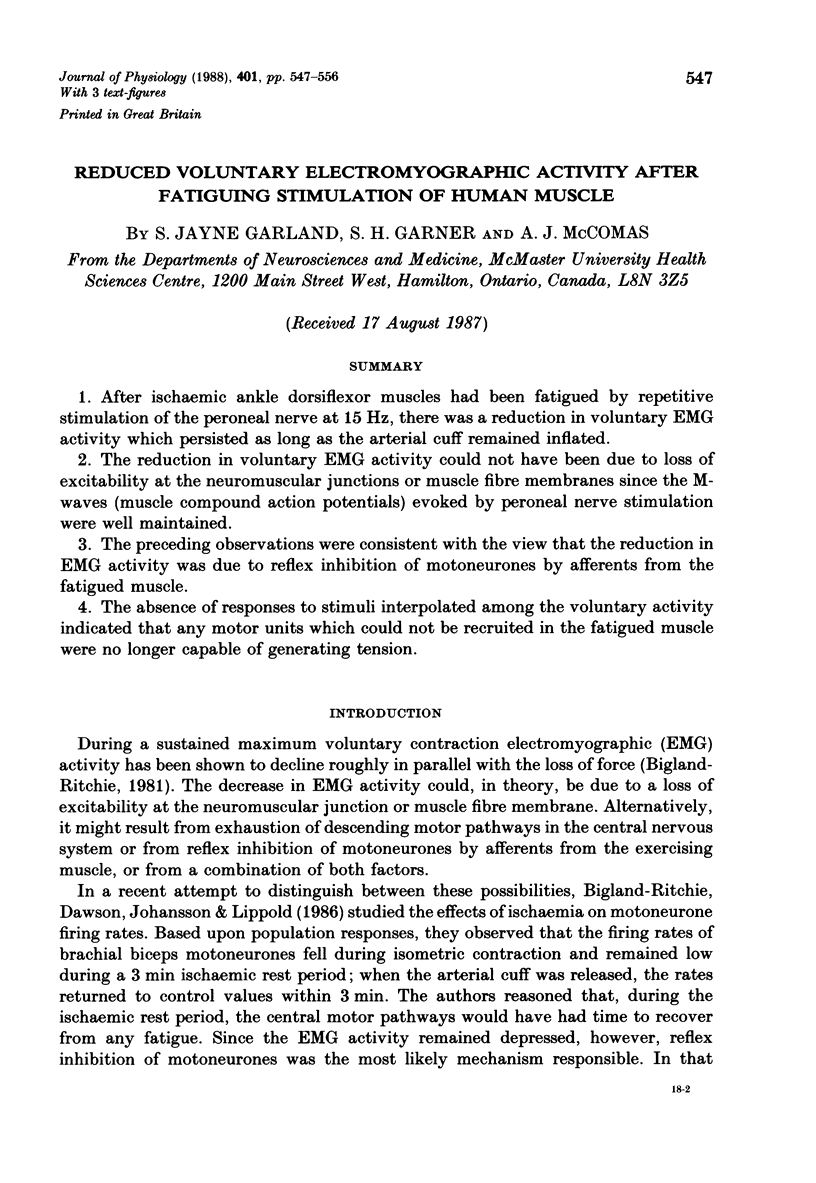
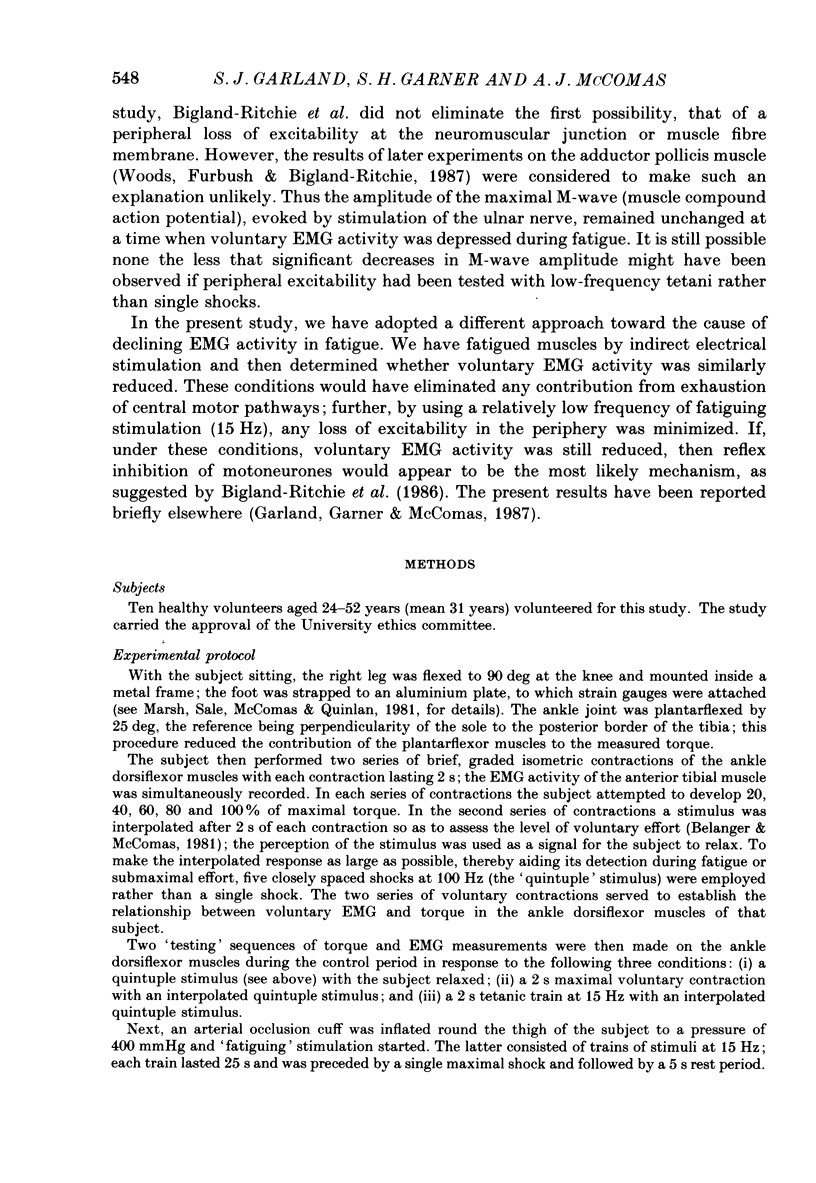
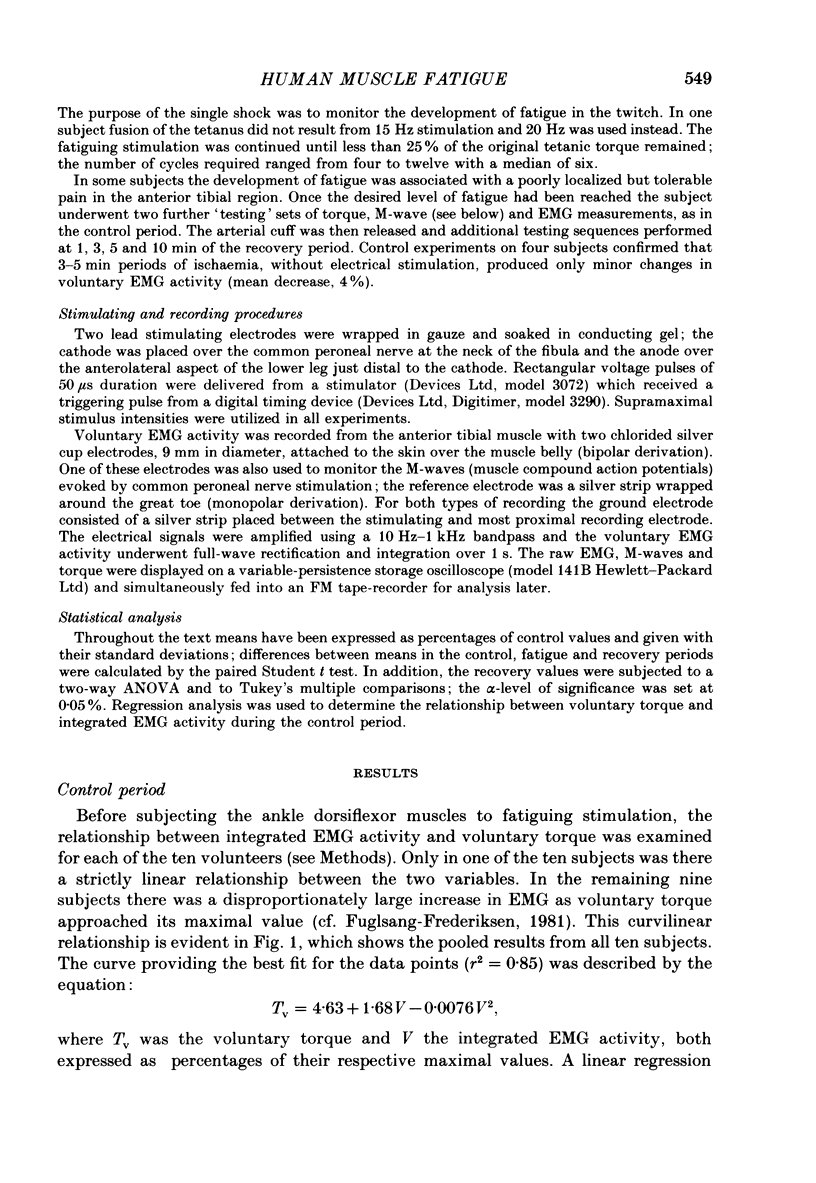
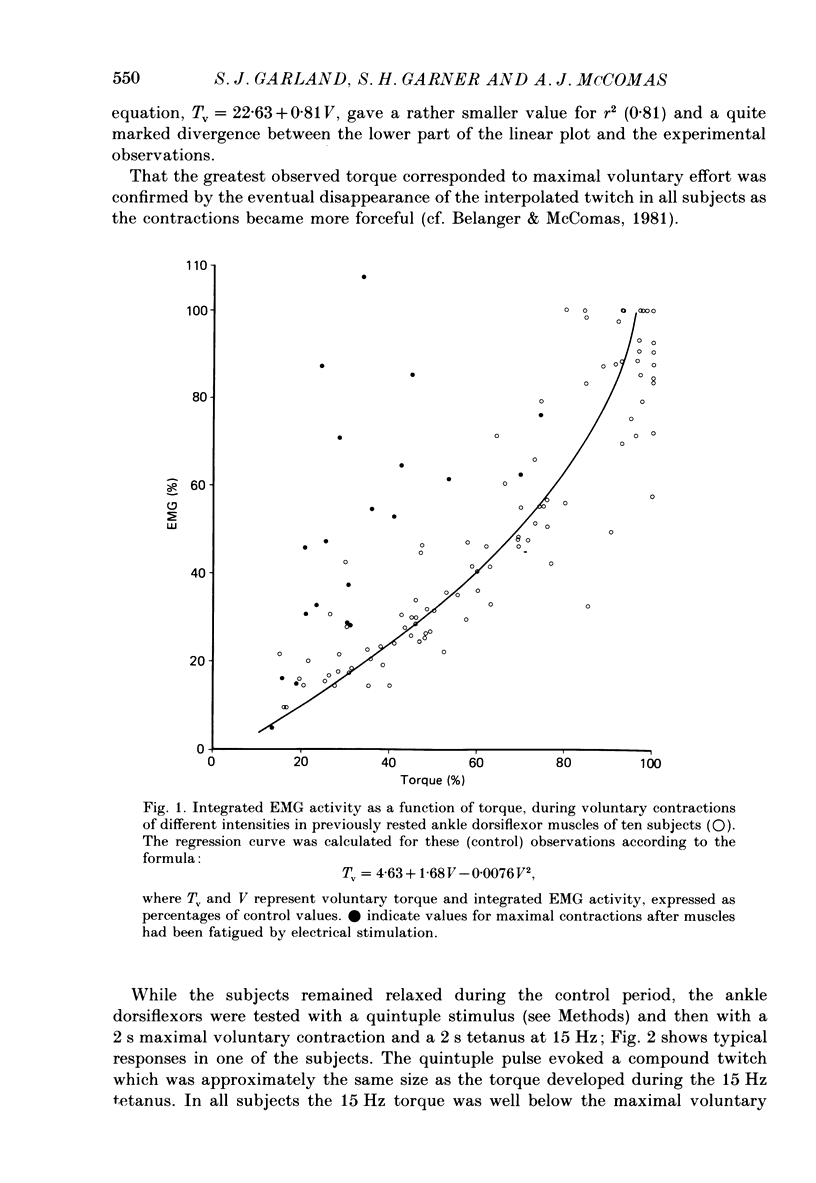
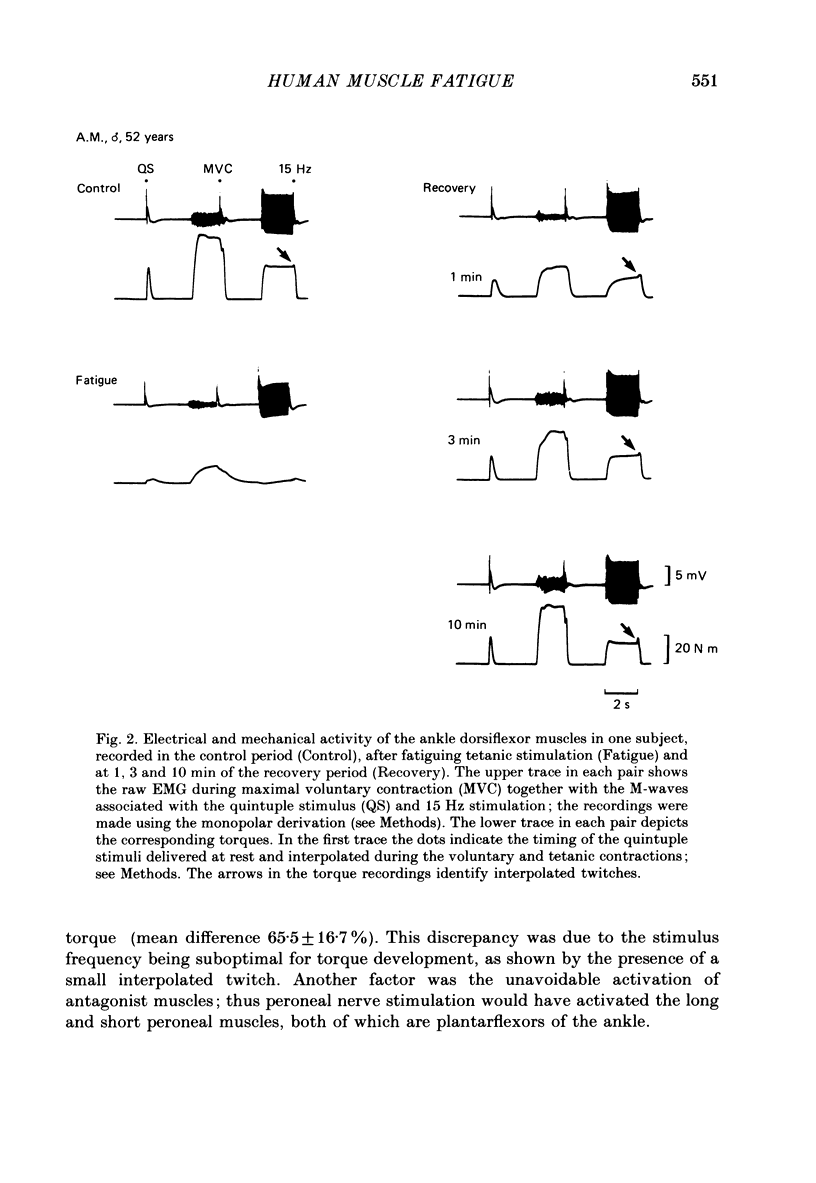
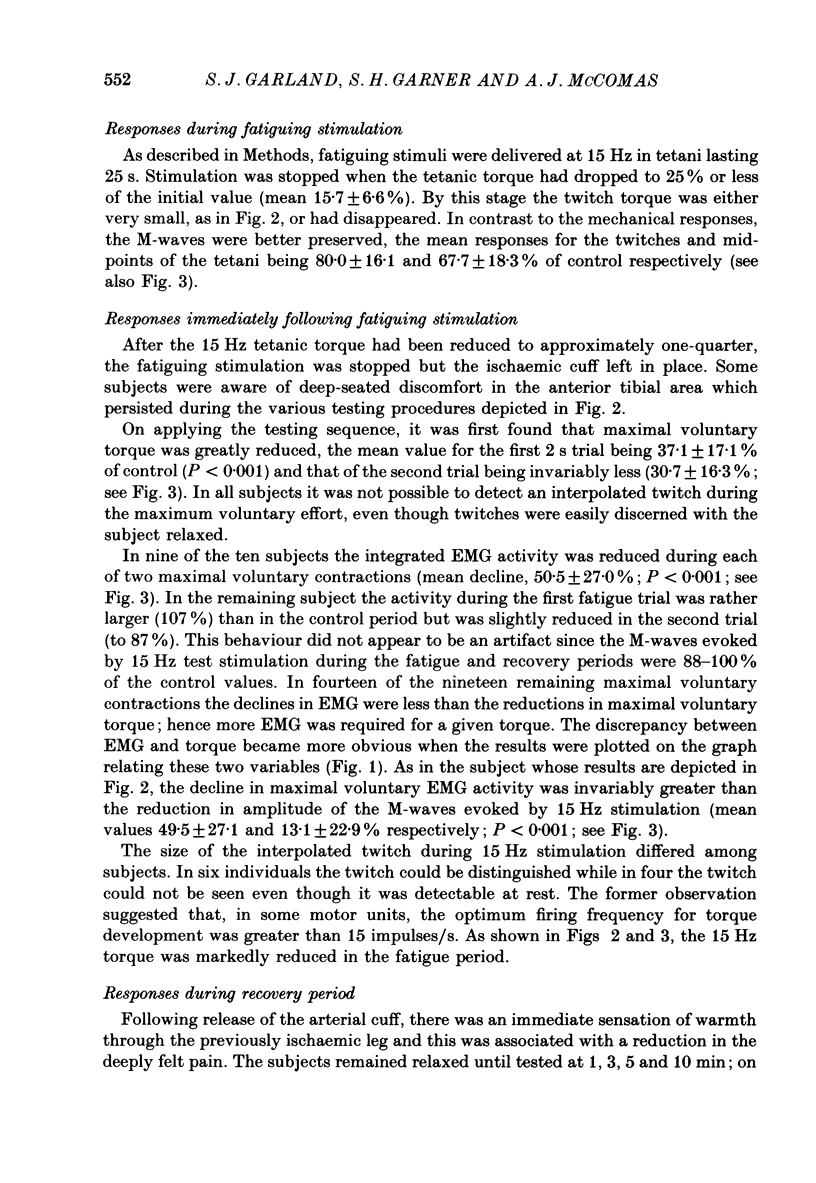
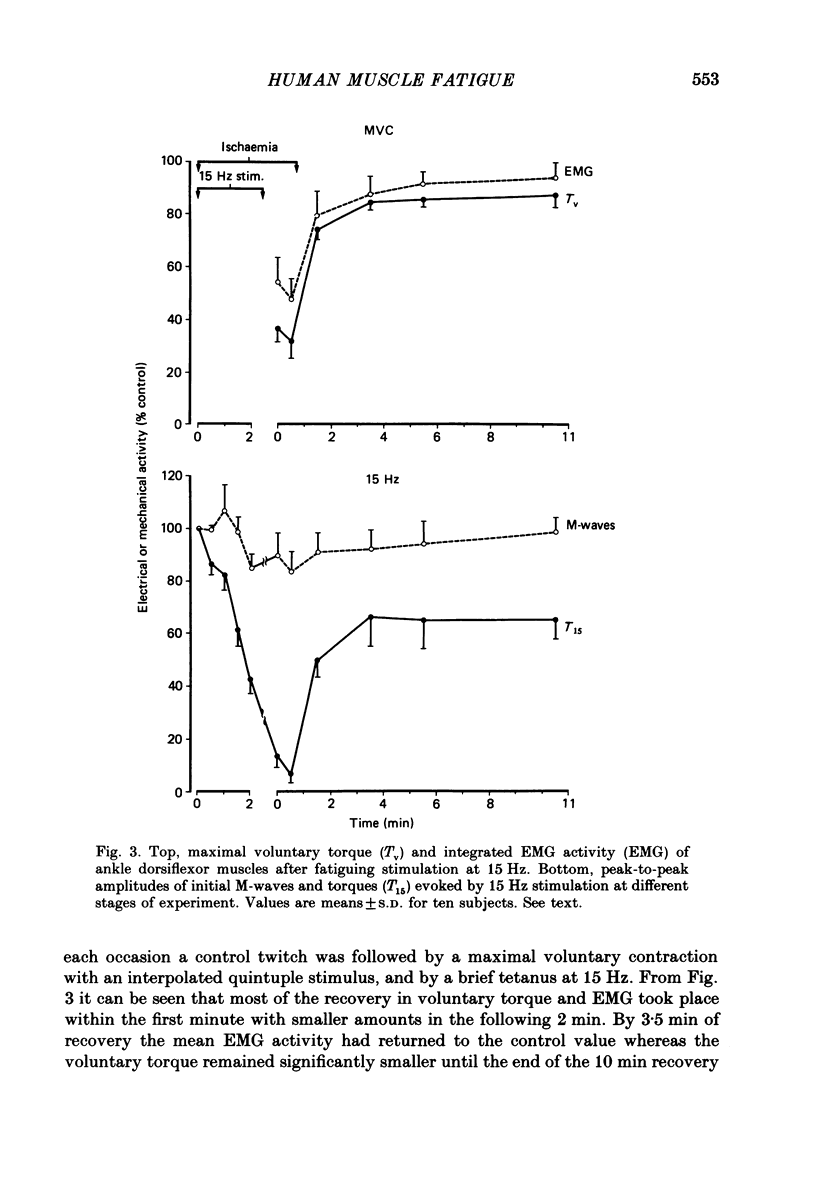
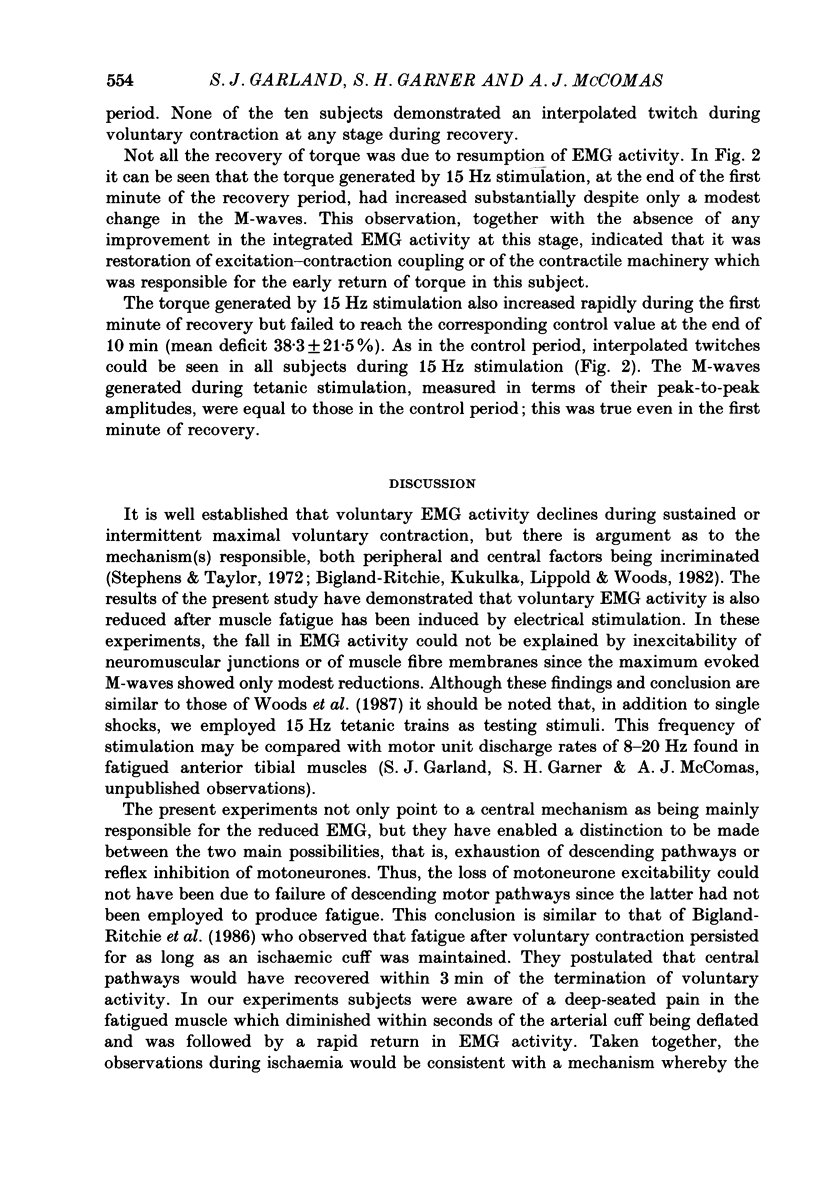
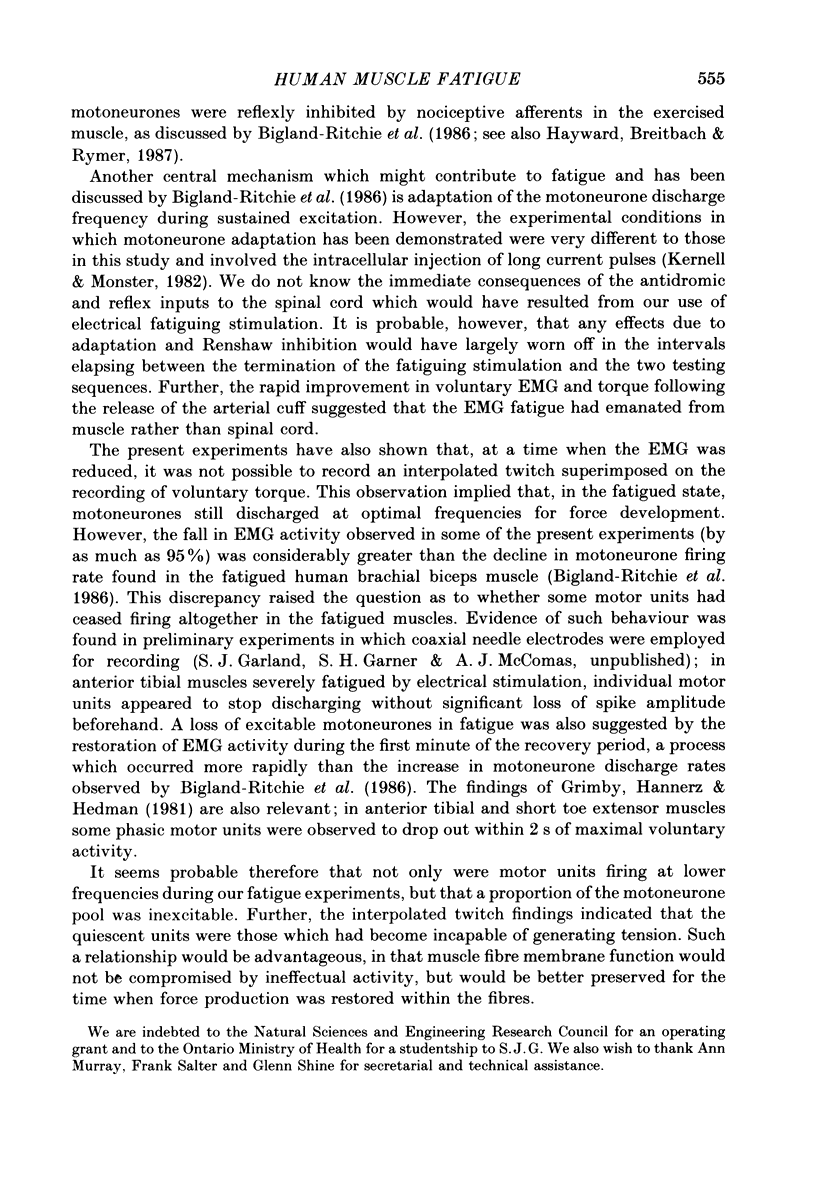
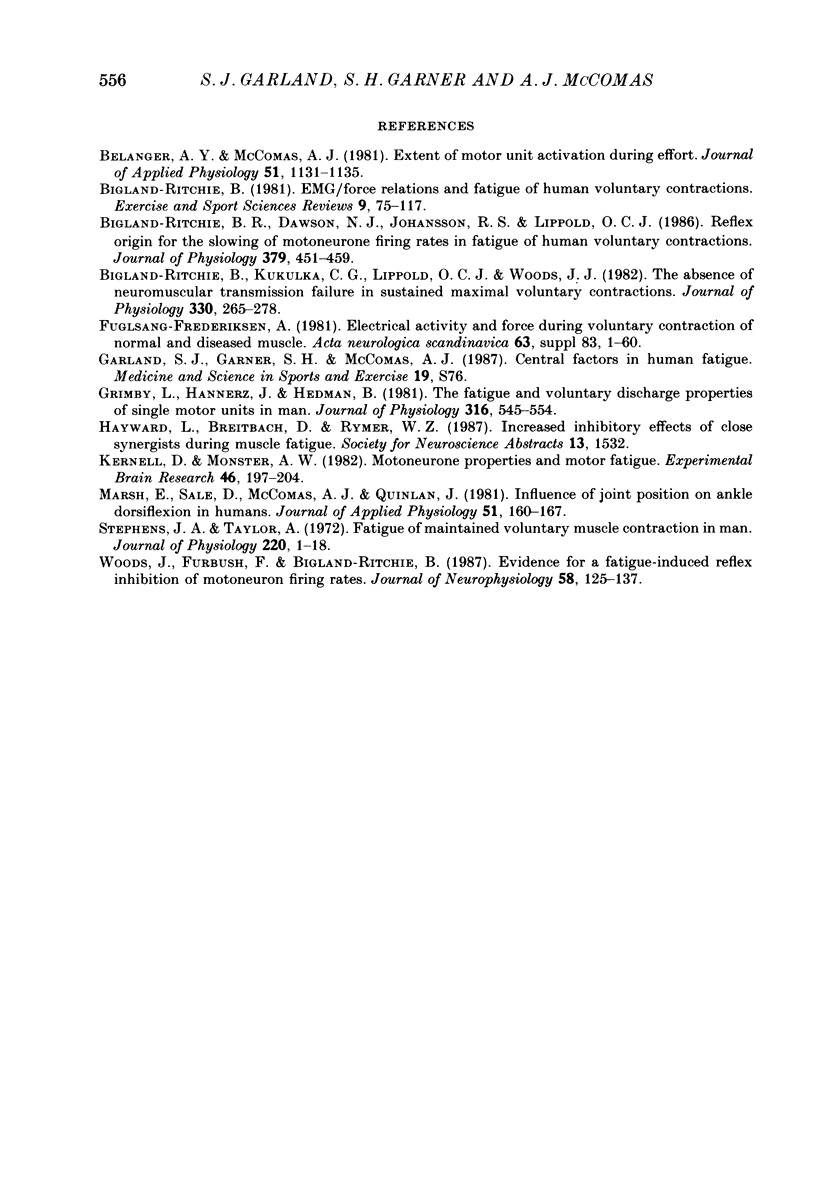
Selected References
These references are in PubMed. This may not be the complete list of references from this article.
- Belanger A. Y., McComas A. J. Extent of motor unit activation during effort. J Appl Physiol Respir Environ Exerc Physiol. 1981 Nov;51(5):1131–1135. doi: 10.1152/jappl.1981.51.5.1131. [DOI] [PubMed] [Google Scholar]
- Bigland-Ritchie B. R., Dawson N. J., Johansson R. S., Lippold O. C. Reflex origin for the slowing of motoneurone firing rates in fatigue of human voluntary contractions. J Physiol. 1986 Oct;379:451–459. doi: 10.1113/jphysiol.1986.sp016263. [DOI] [PMC free article] [PubMed] [Google Scholar]
- Bigland-Ritchie B. EMG/force relations and fatigue of human voluntary contractions. Exerc Sport Sci Rev. 1981;9:75–117. [PubMed] [Google Scholar]
- Bigland-Ritchie B., Kukulka C. G., Lippold O. C., Woods J. J. The absence of neuromuscular transmission failure in sustained maximal voluntary contractions. J Physiol. 1982 Sep;330:265–278. doi: 10.1113/jphysiol.1982.sp014340. [DOI] [PMC free article] [PubMed] [Google Scholar]
- Grimby L., Hannerz J., Hedman B. The fatigue and voluntary discharge properties of single motor units in man. J Physiol. 1981 Jul;316:545–554. doi: 10.1113/jphysiol.1981.sp013805. [DOI] [PMC free article] [PubMed] [Google Scholar]
- Kernell D., Monster A. W. Motoneurone properties and motor fatigue. An intracellular study of gastrocnemius motoneurones of the cat. Exp Brain Res. 1982;46(2):197–204. doi: 10.1007/BF00237177. [DOI] [PubMed] [Google Scholar]
- Marsh E., Sale D., McComas A. J., Quinlan J. Influence of joint position on ankle dorsiflexion in humans. J Appl Physiol Respir Environ Exerc Physiol. 1981 Jul;51(1):160–167. doi: 10.1152/jappl.1981.51.1.160. [DOI] [PubMed] [Google Scholar]
- Stephens J. A., Taylor A. Fatigue of maintained voluntary muscle contraction in man. J Physiol. 1972 Jan;220(1):1–18. doi: 10.1113/jphysiol.1972.sp009691. [DOI] [PMC free article] [PubMed] [Google Scholar]
- Woods J. J., Furbush F., Bigland-Ritchie B. Evidence for a fatigue-induced reflex inhibition of motoneuron firing rates. J Neurophysiol. 1987 Jul;58(1):125–137. doi: 10.1152/jn.1987.58.1.125. [DOI] [PubMed] [Google Scholar]


